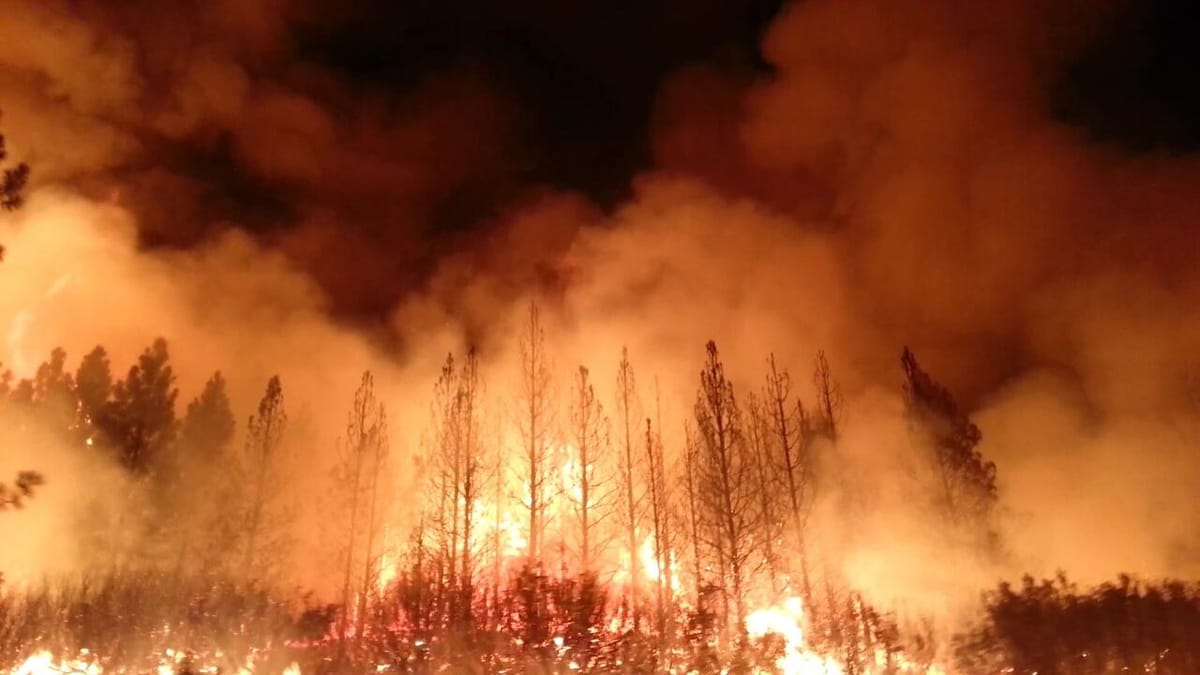The Camp Fire Rages On

Holly Sampson, BA Middle Eastern Studies and World Philosophies
With 83 confirmed dead and more than 500 people missing, Northern California is facing one of the worst outbreaks of wildfires in recent history.
Since November 8th there has been an upsurge of fires across California. The largest and most destructive of which has taken place in Butte County, Northern California. Named The Camp Fire, it has so far killed 83 people and over 500 more are still missing, along with the mass destruction of property. The Camp Fire is set to be one of the most devastating wildfires that Northern California has ever seen. In the centre of the disaster is a town called Paradise which now resembles something far from its namesake. With the majority of the town burnt down to the ground, it contributes a large percentage to the total of nearly 13,000 structures that have been destroyed.
Whilst the cause of this wildfire is yet to be confirmed, fingers are being pointed at Pacific Gas & Electric who reported damage at a high-voltage transmission line that failed at around 6 am on November 8th, mere hours before Paradise was engulfed in flames. Others argue that climate change is a contributing factor to the rise in US wildfires this season, but there is no hard evidence to support this yet. President Trump, however, places the blame on poor forest management and used the example of Finland (where they rarely experience wildfires) raking their forests to prove his point about the multitude of wildfires. However, President Sauli Niinisto of Finland has since told a Finnish daily newspaper that he doesn’t recall ever discussing forest raking with President Trump.
It is not just in Northern California, however, that Wildfires have raged over the past few weeks. In the afternoon of November 8th, the Woolsey Fire began with a fire that ignited on the Santa Susana Field Laboratory in Ventura County, Southern California. Due to the powerful Santa Ana winds, this fire spread rapidly, reaching Malibu and, further North, Thousand Oaks. With the fire spanning over 70,000 acres, over 295,000 people were evacuated and there were 3 civilian fatalities. However, unlike The Camp Fire which, at the time of writing, is 95% contained, the Woolsey Fire is fully contained.
“Thousands are now homeless in Northern California, an entire town with hospitals, schools, local amenities, has been destroyed and an unprecedented number of people are still missing.”
However, the implications of these fires will go beyond their containment. Thousands are now homeless in Northern California, an entire town with hospitals, schools, local amenities, has been destroyed and an unprecedented number of people are still missing. People’s health may be affected by smoke inhalation as Northern California’s air quality has now been ranked the worst in the world. As California faces longer fire seasons every year, it seems that The Camp Fire is only the beginning of a bigger state-wide, and potentially country-wide, problem.
Photo Credits: Creative Commons



